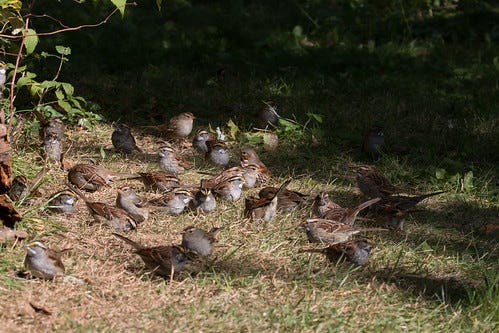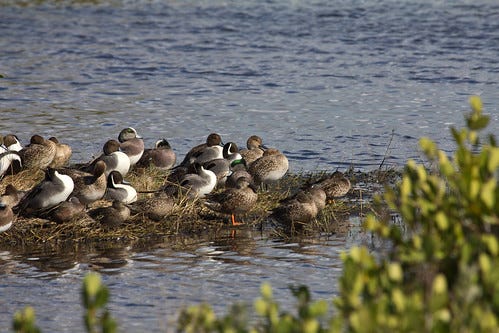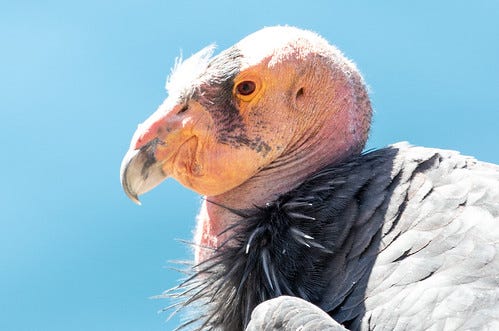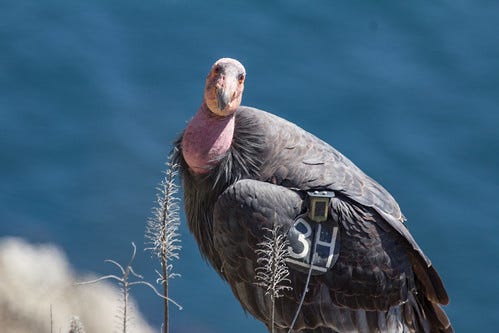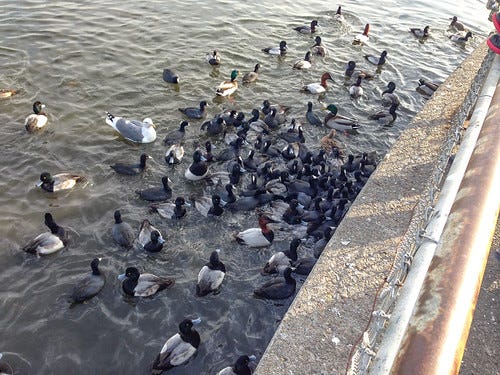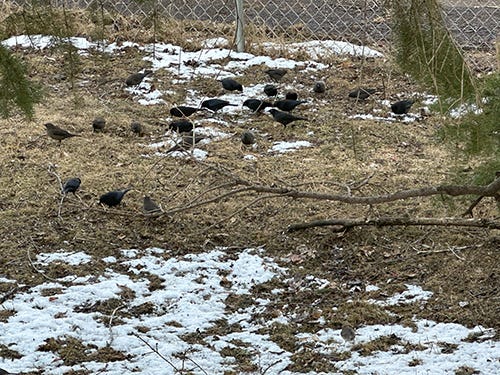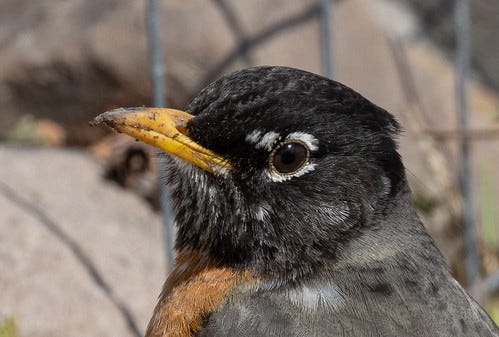(Listen to the radio version here.)
Right now, highly pathogenic avian influenza continues to endanger a great many birds. It almost certainly originated in the overcrowded conditions of domestic poultry operations, but as with Covid, the critical issue, however pandora’s box got opened, is how to limit its spread and protect the birds we love now.
This strain of bird flu lives up to its “highly pathogenic” moniker—epidemiologists consider it to be the deadliest and most infectious bird flu ever to strike North America. Birds who develop it virtually all die in short order. Most flu viruses die in cold temperatures, but some new research indicates this strain can survive in cold Minnesota lake water with no host bird during winter. Heartbreakingly and frustratingly, a vaccine for bird flu exists but is not yet approved for use in the U.S., and the timeline for approval and availability is unknown.
Bird flu spreads exceedingly rapidly through waterfowl and shorebirds, who feed and associate in tight groups with no concept of social distancing. Birds of prey are also terribly vulnerable because they are so adept at catching birds slowed down by injury or disease. Shasta, a charismatic and popular individual Peregrine Falcon who was nesting atop the San Jose, California, City Hall, was found sick in late March and quickly died. This week tests confirmed that she had died of avian flu. Her mate, Sequoia, is missing. And North American hawk counts last year showed lower-than-expected numbers of many hawks, almost certainly due to bird flu.
Scavengers are also incredibly vulnerable. On April 17, the U.S. Fish and Wildlife Service reported that seven California Condors in the Arizona population were confirmed to have died from HPAI since March 20, and at least 10 other dead condors are suspected to have had the illness but results of necropsies are still pending. Some sick condors are undergoing testing for the disease while receiving care. The entire wild California Condor population in 2022, according to the National Park Service, was a mere 347, so this loss is horrifically significant, and with the disease still spreading, it’s certain that even more will succumb.
Minnesota is the epicenter of confirmed cases, with more wild birds known to have been killed by bird flu than any other state, but this is almost certainly simply because Minnesota has tested more carcasses than other states. Some states have had much larger die-off episodes than Minnesota, such as terns in Wisconsin and Snow Geese in Washington, but only individually tested carcasses are officially counted.
Of all North American birds, California Condors are the most likely to be tested if they show any sign of the disease, because almost every individual bears a tracking device that helps researchers notice almost immediately when one stops moving. This means that each bird has at least a chance of being rescued or, if it’s too late, that the carcass will be retrieved and necropsied.
Even without tracking devices, many birds of prey and waterfowl are large enough that at least some of their carcasses will be noticed by a person. But songbird and hummingbird carcasses are much more difficult for us to notice, and before they die, small hawks and falcons often grab them before we even notice they’re sick.
Even worse as far as tracking the disease’s spread among small birds, we are not reacting to this disease the way we did when West Nile virus first appeared, when any carcass we found could be brought somewhere near to be necropsied. So far, most testing for bird flu in wild birds has been done on species of economic value to hunters or on birds of prey treated at wildlife clinics, and to protect the birds they’re already caring for, few can accept sick or dead birds right now. When we find sick or dead birds, we’re simply asked to contact our state’s wildlife agency. Here in Minnesota, we’re supposed to call the DNR information center at 888-646-6367, but they’re mostly interested in cases where five or more dead wild birds are found in one location and they don’t want carcasses for testing. To learn if any backyard bird deaths are due to bird flu, we have to find a testing facility and pay for the expensive tests ourselves.
Birds of prey and waterfowl are large enough that at least some of their carcasses are noticed by people. But songbird and hummingbird carcasses are much more difficult to detect, and before they die, small hawks and falcons often grab them before we even notice they’re sick. This lack of data about songbirds makes some complacent that we don’t need to worry. Agencies and organizations are telling people we can continue to feed backyard birds without concern, but that’s simplistic, especially when it’s so difficult and even impossible in most places to get sick or dead backyard birds tested.
I strongly recommend that people close feeding stations anywhere near poultry farms or where ducks gather, and to not feed wild ducks at all. Birds drink where they’re bathing, so bird baths are worse than feeders for disease transmission. I won’t be starting up any of my bird baths this year. And regardless of whether we’re feeding a handful of birds or flocks of them, it’s more critical than ever to close feeding stations entirely at any sign of a sick bird. During migration, infected birds can fly to new places before they become symptomatic, exposing healthy birds.
It’s so cold in Duluth right now, with more snow predicted this week, that my yard is teeming with robins, juncos, Fox and American Tree Sparrows, and even a flock of Rusty Blackbirds.
Feeders don’t so much determine how many birds will gather as where they’ll gather. My daughter, who doesn’t have feeders, has almost as many birds in her yard on Tischer Creek as I do. Last year, she had far more Rusty Blackbirds than I did—the 25 visiting my yard are almost certainly reducing the flock size around a nearby river or creek, spreading the birds out.
We’re expecting more snow this week, and in bad weather, migrants tend to flock even more. Because they’re flocking either way, it doesn’t hurt to feed backyard birds as long as the food is very fresh and we’re extremely vigilant about monitoring the birds for any sign of illness. I’ve been scattering a bit of millet on the ground in different places each day so the birds here will spread out as much as possible. But I’m traveling a lot this spring, and when I’m home, I babysit at my grandson’s house just about every day, so I can’t monitor my feeders responsibly without my husband and son’s help.
It doesn’t hurt to feed backyard birds as long as the food is very fresh and we’re extremely vigilant about monitoring the birds for any sign of illness.
This whole situation makes me cosmically sad, and angry that monitoring and testing for the disease and approving a vaccination that is already being used in other countries is such a low national priority here, but that’s tragically the way it is.





